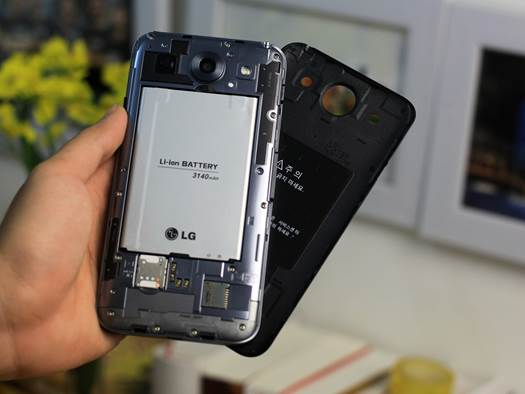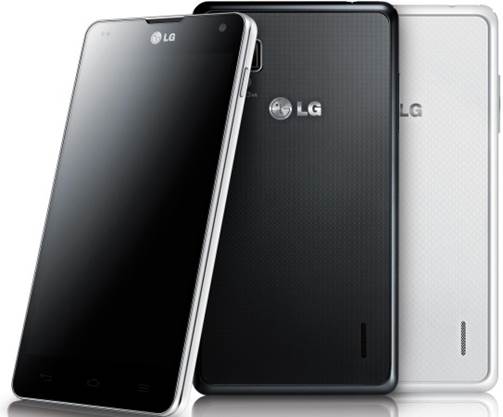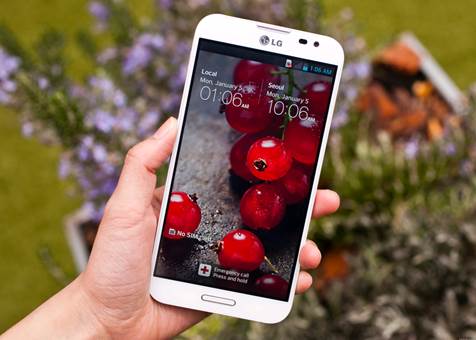Looking back at the launch of the S4 Pro,
it was hard for us to understand how anything could be faster or better than
what we already had. We certainly knew that Moore's law would continue its
normal way, and we are a witness to its influence only a few months after the
APQ8064’s introduction. The G Pro is the fastest smartphone we've ever used,
although we have a feeling that it will not maintain the title for very long -
after all, 2013 will be the year of Snapdragon 800, Exynos 8-core and Tegra 4
(our first tests broke out anything we've seen so far), so the battle is just
beginning. However, since we are talking about the present, let’s give the
phone a praise that it is worthy - we've put in quite a lot of
processor-intensive tasks at the G Pro, but it was not embarrassing. The
websites loaded smoothly without delay or tiling effects. Games also made good
use of the Adreno 320 GPU inside, because we saw plenty of details in popular
games that we've never seen on a smartphone before.

The
G Pro’s battery life
The G Pro’s battery life is predictable,
but that's a good thing – the 3140mAh battery is said to be good, and it is
right. It's not the best part; our test model accompanied with a second battery
of equal size. This alone is enough to win the hearts of savvy users and
international travelers. But how well does a single battery perform on one
charge? If you assess by our battery endurance test, including running a
continuous high-definition video, it's quite average, at just over seven and a
half hours. However, using it in practice was much more stable: we spent a day
visiting Barcelona, taking hundreds of images, sending quite a lot of emails,
and plenty of activities related to other work, participating in social media
and struggling with the dead zones when we went around the city. The G Pro
achieved 14 hours of battery life before it ran out of. This means that between
the two batteries, in theory you will only have to charge up once every other
day, if it does not want to be supposed that it is not less often.
How about the phone calls? Yes, we made our
calls quite a lot on Vodafone Spain's 3G networks, and our experience was
wonderful. The voice at the other end of the line was always loud and clear,
and the noise reduction filtered out the busy Mobile World Congress convention
center was so good that our friends were unable to know that there were many
other people around us. The external speakerphone was surprisingly loud for
calls, which was quite in contrast with the quieter speaker used for music and
videos (this is a field that the Note II completely defeats the G Pro).
However, with a good pair of headphones, it has the opposite result: quite a
variety of custom EQ settings a surprisingly stable Dolby Mobile mode, with the
help of a powerful audio driver, make sure that you have the best sound that is
possible to play back multimedia.
We also carried out speed tests on 3G and
reached an average of 8Mbps download and 3Mbps upload, of course, because our
model (F240L) is optimized for use on LG's U+ network in South Korea, we have
no doubt that we do not have the best speed possible in Europe. While talking
about the topic of compatible radio frequencies, please go into more detail:
this particular model features dual-band Korean LTE (850/2100), CDMA1800,
HSPA/UMTS 900/1800/1900 and quad-band GSM/GPRS (850/900/1800/1900). Even though
Americans will be able to expect the version that comes with the appropriate
LTE radios, at least the G Pro consists of support for 1,900MHz 3G in case you
really want to be an initial client. With an AT&T SIM card inserted, we
received from one to four bars of signal (although signal changed erratically),
and our speed peaked at about 3.5Mbps download/ 2Mbps upload.
The G Pro provides both aGPS and GLONASS
support, and in the position tests, the position is always accurate within a
few feet and we were likely to find our way around Barcelona fairly easily. In
terms of the ability to connect, the phone also has Bluetooth 4.0, NFC,
dual-band 802.11a/b/g/n, SlimPort and Wi-Fi Direct.
Conclusion

The
G Pro is successful as an attractive device for anyone who likes to have a
phone that is larger than 5 inches.
LG has gathered momentum. In the last four
months, we have introduced the Optimus G and Nexus 4; two high-end phones have
made us quite impressive. Fortunately, that momentum has continued as the
Korean manufacturers continue to launch the Optimus Pro G. With
higher-resolution screen, more powerful performance and a stable design, the
phone might be more desirable than the Galaxy Note II. It would be good to see
the stylus support, and we will have to wait a long time so that the non-Korean
versions spread throughout the world, but on the other hand, the G Pro is
successful as an attractive device for anyone who likes to have a phone that is
larger than 5 inches.
Info
·
Price: $897
Pros
·
Super-fast processor
·
Gorgeous 1080p display
·
The stable build quality and design
·
Good battery life, coming with backup battery.
Cons
·
Some people may complain about the lack of
stylus.
·
UMTS and LTE frequencies are limited.
Verdict
·
With a beautiful screen, fast processor and the
other top features, the Optimus Pro G is a strong competitor of the Note II,
but lacks the stylus.

The
Optimus Pro G is a strong competitor of the Note II
|
LG Optimus G
Pro specifications
·
Dimensions: 150.2x76.1x9.4 mm (5.91x3.0x0.37
inches)
·
Weight: 6.06 oz. (172g)
·
Screen size: 5.5 inches (5.46 inches usable
space)
·
Screen resolution: 1,920 x 1,080 (401 ppi)
·
Screen type: True HD-IPS + LCD, RGB
·
Battery: 3,140mAh (comes with spare)
·
Internal storage: 32GB (29GB available)
·
External storage: microSDXC, up to 64GB
·
Rear camera: 13.2MP, AF, LED
·
Front-facing camera: 2.1MP
·
Video capture: 1080p, 30 fps (front and back)
·
NFC: Yes
·
Radios: LTE 850/2100 (bands 1 and 5)
·
HSPA/UMTS: 900/1800/1900
·
GSM / GPRS: 850/900/1800/1900
·
CDMA: 1800
·
Bluetooth: v4.0+BLE
·
SoC: Qualcomm Snapdragon 600 (APQ8064T) with MDM9615M
modem (SK/KT use MDM9215M)
·
CPU: 1.7GHz quad-core
·
GPU: Adreno 320
·
RAM: 2GB
·
Entertainment: T-DMB, DLNA, Miracast, SlimPort
·
WiFi: Dual-band, 802.11a/b/g/n, WiFi Direct
·
Wireless Charging: No
·
Operating system: Android 4.1.2, Optimus UI |